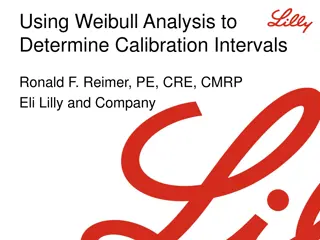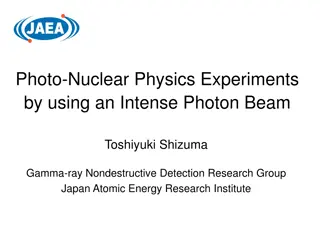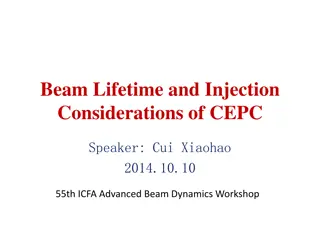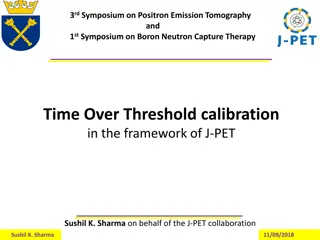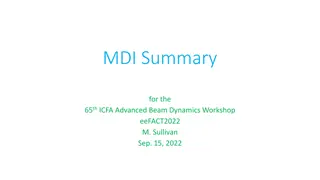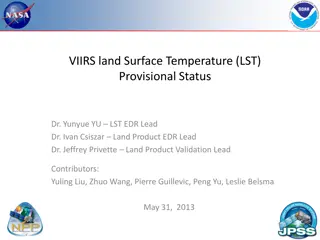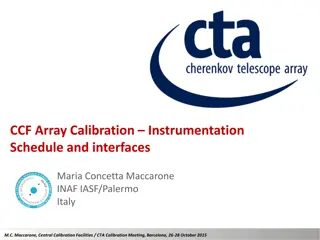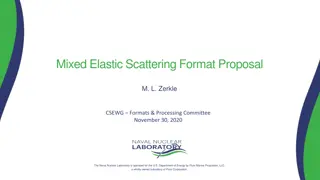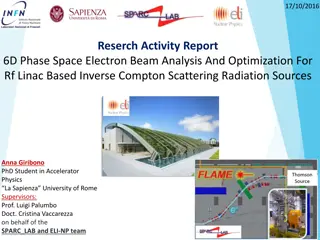Beam Energy Calibration with Compton Scattering Method
The CEPC beam energy calibration with Compton scattering method led by Yongsheng Huang and the CEPC energy calibration working group involves collaborations with various institutions and organizations. The project includes detailed physics requirements, system designs, and implementation plans for beam extraction, Compton scattering, magnetic field analysis, detection systems, and data processing. Notable contributions come from IHEP, CIAE, China West Normal University, University of Science and Technology of China, and CERN. The focus lies on precise Higgs mass measurements, calibration systems, and optimizing the beam line for accurate extractions. Parameters for Compton scattering experiments are also outlined for achieving successful outcomes.
Download Presentation

Please find below an Image/Link to download the presentation.
The content on the website is provided AS IS for your information and personal use only. It may not be sold, licensed, or shared on other websites without obtaining consent from the author. Download presentation by click this link. If you encounter any issues during the download, it is possible that the publisher has removed the file from their server.
E N D
Presentation Transcript
CEPC beam energy calibration with compton scattering method Yongsheng Huang CEPC energy calibration working group
Working group and collaborations IHEP: Xinchou Lou, Yongsheng Huang, Guangyi Tang,Manqi Ruan, Jianyong Zhang, Guangpeng An, Yuan Chen(Magnetic design), Yiwei Wang(extration system), Zhe Duan, Guanglei Xu(timing comtrol), Gang Wu(spatial alignment), Hongbo Zhu (Si detector), Shanhong Chen CIAE: Naiyan Wang(Compton scattering system design), Baozhen Zhao(laser system), Xiaofeng Xi (time synchronization) China West Normal University: Xiaofei Lan, Meiyu Si(simulation of the Cherenkov radiation, the simulation of new fiber detector) University of Science and Technology of China: Shubin Liu, Changqing Feng( electronic system and test) CERN factory & CIVIDEC: CEO, CVD diamond detector and test
Outline Physics requires and system design Beam Extraction Compton scattering Analytic magnetic field and the drift segment The detection system: CVD diamond+ Silicon pixel detector; the new Cherenkov fiber detector; The simulation and data processing
Physics requires and system design Higgs mass measurement: 1MeV@120GeV Compton Scatterin g region Calibration system Calibration system Compton scattering detecti on Magnetic &drift extraction Calibration system Calibration system
Beam Extraction(Yiwei Wang, Yuan Chen) Design requirement beam at the interaction point of beam and laser ??? ??????? < ?? ?, ???????< ???m, ??< ?.? mm, ??< ?.?? mm beam at the end (for ??< ?.?% ) ??< ? mm, ??< ? mm Preliminary design Dispersion suppressed before the IP in order to reduce the beam size Strong quadrupoles are used to get a short extraction line Work to be done Optimization of the beam line to get softer magnets tracking in main ring to get realistic extracted beam including aberration, radiation, beam-beam tracking including aberration, radiation, static and dynamic errors of the transport line ?? ??
Compton scattering (Yongsheng Huang,Guangyi Tang,Guangpeng An, et al. IHEP& CIAE) Parameters: Cross section:600mbar Scattered photon: ??? ?/ ????? Time synchronization: 1ns is OK ! Spatial alignment: 10 m is OK The scattered electrons: From 36GeV---120GeV Note The LCS gamma ray from Tsinghua University can realize 216fs time synchronization between the electron beam and the laser beam 30fs Beam spot size 10micrometers In 10Hall we are doing the experiment 10ns laser+electron beam 10ps .
Analytic magnetic field and the drift segment (Yuan Chen) Magnetic field: 0.5T,3m,? ?? ? The bending angle: The energy VS the position on the detection: The beam energy:
The detection Three positions: The center of the gamma ray:X The center position of the main beam Xbeam The edge of the scattered electron beam Xedge Strip detector: 1D, 10micrometer per strip Pixel detector: 100micrometer @ 500m drift length; 10micro@50m number Electron distribution after compton scattering 120GeV 36GeV
The detectors (Jianyong Zhang) CVD strip diamond detector+Si pixel detector Radiation resistance: CVD diamond ????/??? Si detector: ????/??? 4.5m*1cm: so large detector CVD after compton distribution scattering Electron Si detect or number
The Cherenkov fiber detector(Xiaofei Lan, Meiyu Si, Jianyong Zhang): 3micrometers-16micrometers available Cherenkov radiation in the fiber : ? = ? ? ? ?.?? C particle momentum direction ? A ? ?? ?? B The Cherenkov photon number/electron number satisfies: ( the new simulation results) ? ???? (? ? yx Z Z ?? ? = ?.?????) R=5?? L=40?? fiber E_e=120GeV
Simulation results Systematical errors for 1MeV@120GeV: ??????= ?.???? for 10?? of ?????? From synchrotron radiation and magnetic field With the correction (the energy loss can be calculated): 0.1MeV The uncertainty of the angle between the detector place and the incident beam: 0.5mrad--------0.9MeV The derivation of the calculated energy with the truth:11.5MeV, which can be corrected back. Statistical errors 0.5MeV Scattered electrons: The function to sim. The main beam
We need to do: Test the compton scattering in 10Hall: time synchronization and spatial alignment Design and Test the CVD diamond detector and Si detector in 10Hall Design and Test the gamma-ray detector Design and Test the new Cherenkov fiber detector: flux of photon and the position uncertainty To make sure the extraction works



